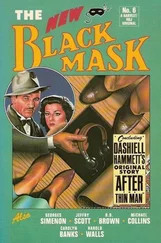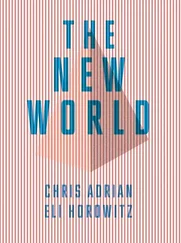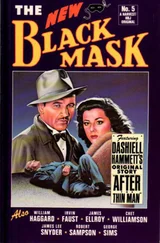Well, now I would like to return directly to Schoenberg. I will choose a piece from Gurrelieder that could be considered a ‘hit’ – that is, it is extremely popular and many people are inclined to say how beautiful it is, and I also think it is especially beautiful. But I will show you a few things in this piece that perhaps contradict its outwardly enchanting character somewhat; and, indeed, there is an extremely strong tension in Schoenberg’s youthful works – he would speak later of the ‘subcutaneous’ element 9– between the musical surface and the subcutaneous events, that is, what is happening underneath. So I will take the famous song of Waldemar from Gurrelieder , which is on page 37 of the piano reduction: ‘So tanzen die Engel vor Gottes Thron nicht’ [Thus the angels dance not before the throne of God] [plays]. So, this is an eight-bar song, and is completely in D major. And it is a very beautiful melodic idea, as they say. I must say, the more closely I have looked at these eight bars, the more alien they have become to me. As you know, one of the most fundamental elements in Schoenberg’s Theory of Harmony , and consequently in the entire development of Schoenberg’s music until the twelve-note technique, is the awareness of scale degrees – that is, the awareness of a stepwise motion with strong root progressions. Now, there is essentially none of that here; instead, it always stays, it always hovers around this D. And the tonic has an extremely strange weight here. The tonic seems as if it were seizing this entire phrase – not in the manner of a pedal tone, as things do progress harmonically, but in such a way that the music keeps reverting to the tonic. Take note of it, this peculiar dominance of the tonic, which really goes against everything we would have learnt in Schoenberg’s school. Schoenberg’s freedom from his own doctrine is something I would like to point out to you quite emphatically [plays]. Now the D major returns, and this is very odd, because he could have continued like this [plays] or with something similar. But he eschews that; one might say that he follows this gravity and stays there [plays]. Yet again the tonic [plays]. Now, that leads to something I have already touched on, but which I wanted to tell you more about, namely the fact that the development that drove Schoenberg beyond tonality is connected precisely to an extremely heightened awareness of tonality. And this is an awareness in which the tonic is taken much more seriously, much more emphatically than in all the other neo-German music from the same period. For example, you can find something very similar in a song whose material is actually far more advanced, such as ‘Traumleben’ [Dream life], which I will discuss later, 10from op. 6 [plays], where the music also locks into the tonic, and in the second period it ends in exactly the same way on the tonic rather than moving away from it. Now, I want to examine this aspect because I think that, precisely in this, in this very strong awareness of the autonomous value of the scale degree beyond its mere functional purpose in Riemann’s sense, the function of dominance – that, paradoxically, it is precisely here that we find the element that subsequently broke through the boundaries of tonality. For if you listen properly to something like the passage from Gurrelieder that I played for you, then the individual chord seems to take on a life of its own in relation to the context in a way that it never really does with the other neo-German composers of the Wagnerian school, with Hugo Wolf, with Reger, with Richard Strauss, not with any of these important composers. The chord, the first degree, becomes a form of absolute here. It becomes an existent [ Daseiendes ], not merely an element in a state of becoming. And precisely this reinforcement of the individual constitutive degrees in the harmonic writing, this is really the precondition for the emancipation of harmony in later Schoenberg and the way the individual sound takes on this peculiar meaning of its own, which then enables it to step out of the tonal context. So I would say that here too, in this harmonic dimension of Schoenberg, we are dealing with a force field, with two tendencies that cannot simply be brought together. On the one hand, you are dealing with the dynamic, with this highly developed awareness of degrees, which is extremely closely connected to the principle of variative development, of thematic work – that is, with the whole sonata spirit in Schoenberg. On the other hand, you have a certain stubbornness of the individual element, which has its own weight in a way one does not find among the other neo-Germans. And precisely this polarity, the fact that Schoenberg is on the one hand far more dynamic than the other composers – here I mean ‘dynamic’ in the sense of progression, of movement, not ‘dynamic’ in the narrower musical sense of piano and forte , I am sure you will understand me – but, on the other hand, he has a stronger sense of the individual musical element, for the – how shall I put it? – for the disconnected, I would almost say, through this tension towards the extremes. This was really a major factor in the collapse of tonality. You can find this element that I just described to you – and which is by no means easy to pin down but lies only in this strange tendency towards persistence – you can also find this in the mature Schoenberg in a certain sense, in the things I once referred to as ‘blotches’ 11– that is, in certain irrationalities, shall we say, in certain individual aspects that set themselves apart from the context, that cannot be entirely absorbed by the overall dynamics, and which stand there as a slightly foreign counterweight to those dynamics. Those of you who truly know Schoenberg’s work know exactly what I mean by these blotches. For example, the tremolo passage in the first of the op. 19 piano pieces, which I am sure you all know, this is an example of that exact phenomenon. And by identifying this, by highlighting this peculiar irrationality of insistence at the individual level, I come to an aspect that strikes me as not insignificant for the fundamental controversy in which we find ourselves here.
Perhaps I can share an experience of my own with you, for I generally want to attempt to reconstruct experiences and somehow give you access to the experiential core of these things. In 1924, at a time when I was already quite familiar with Schoenberg’s work, I had my first encounter with a work by Webern: the op. 5 quartet pieces, 12which I now love dearly and consider a great masterpiece. At the time, however, I measured these pieces against the op. 19 piano pieces. And I remember exactly that I was reviewing them, and I wrote at the time that these op. 5 quartet pieces by Webern constituted a step backwards from Schoenberg because this particular form of irrationality, of complete freedom, of being irreducible to thematic connections, had already given way to a form of rationalizing process. 13Those of you – and I assume that is almost everyone – who know Webern’s op. 5 very well will know that the thematic work there has already been taken extremely far, and that constant variations are brought about by devices such as shifting entries by a quaver, accordingly shifting the accents. He is really composing with basic cells. Perhaps we will have an opportunity to analyse these pieces very closely. They are very interesting, and unmistakably progressive. But I still remember exactly my feeling that, compared to Schoenberg’s op. 19 – which, if I am correctly informed, was actually written slightly after the quartet pieces by Webern – compared to that op. 19, its systematic nature was a step backwards to an extent, as this sphere of the blotch, this sphere of the true freedom of an organically necessary approach based on the gravity of the music, without seeking refuge in thematic cogency, because that was lost in the process. And I would certainly say that this element in Schoenberg strikes me as one of the most important. Mr Boulez spoke in his lecture of the later Schoenberg, of certain academic tendencies in later Schoenberg, 14and I would say that these elements I am referring to are precisely the non-academic elements in Schoenberg – that is, those whereby he eludes any formula or rigidity – and really the elements, I would say, that count most today. So this means that one must realize the sense of precisely those phenomena that are not driven and justified by the motivic machine, must understand what they are therefore, and try from that point to take up such impulses, this gravity, the ‘sexual life of sounds’, as he called it, 15even at the cost of one’s own principles. Measured against what Schoenberg taught, with the importance of scale degrees, measured against this, the passage I played to you is undoubtedly a deviation. It is un-Schoenbergian in this sense but infinitely consistent in a higher sense, because here – and this is the artistically decisive aspect – the reversion to the tonic is the idea. I think one can pinpoint the difference between the technically pre-artistic and the technically artistic very concisely, namely as the difference between false and true: whether a composer cannot get beyond the first degree because they have not yet learnt their harmony properly, or whether a theme is conceived in such a way that its character, its particularity, lies in the fact that it specifically tends towards the tonic, as is the case here – and that is really what we find in such a theme in Schoenberg.
Читать дальше












